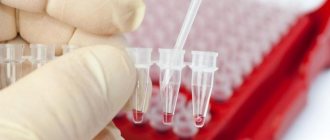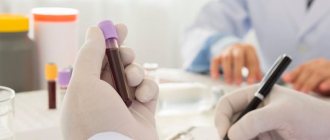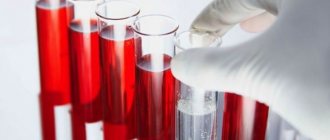Complexes with this research
Men's check-up No. 1 39 studies for an annual preventive examination 18,570 ₽ Composition
Women's check-up No. 1 38 studies for an annual preventive examination 19,290 ₽ Composition
Risk of severe COVID-19 Diagnosis of prediabetes and bleeding disorders RUB 1,090 Composition
IN OTHER COMPLEXES
- Extended coagulogram RUB 4,150
- Examination during pregnancy. 1st trimester 16,690 RUR
- Expanded hospital complex RUB 7,700
- Preventative check-up RUB 11,960
- Coagulogram RUB 2,020
Blood INR: measurement, interpretation, norms
Many people hear the blood INR indicator. What does it mean? Why do doctors pay so much attention to him? How important is the determination of blood INR in medical practice? Read about this in our article.
What is blood INR?
The abbreviation INR blood stands for International Normalized Ratio . However, for a person not involved in medicine, this is an empty phrase. To understand the essence of blood INR and its role in the body, you need to take a short excursion into the physiology of the circulatory system.
The liquid state of blood in the human body is ensured by the coordinated work of the coagulation and anticoagulation systems. Fluidity, an important property of blood, is ensured by the anticoagulant system, and during bleeding, clotting ability becomes important. If the functioning of these systems is disrupted, a person experiences increased bleeding (for example, constant bleeding of the gums when brushing teeth, frequent nosebleeds) or a tendency to thrombosis - the formation of blood clots that can “pass” through vessels of larger diameter and “get stuck” in vessels of smaller diameter diameter It is dangerous when they enter the vessels of the heart and brain, because in these cases they lead to heart attacks and strokes and, as a result, to disability.
Normally, a healthy person is in a state of slight hypercoagulation, i.e. in a healthy body there is a slightly increased functioning of the coagulation system. However, in the absence of diseases, this feature does not lead to acute vascular accidents (heart attacks and strokes). In the presence of certain diseases (and first of all, the very common atrial fibrillation), the already existing tendency to thrombus formation sharply increases. Doctors have long noticed this feature, therefore, if a person has diseases accompanied by increased thrombus formation, they prescribe antithrombotic therapy (anticoagulants and antiplatelet agents) to prevent heart attacks and strokes. I would like to emphasize that these drugs are prescribed strictly by a doctor, since if used independently and uncontrolled, they can have serious life-threatening consequences. The severity of the effects of these drugs is closely related to the concept of blood INR.
Since antithrombotic drugs thin the blood by preventing blood clots, it is extremely important to monitor blood counts that reflect “how thin” the blood is. The main indicator is blood INR. The widely used indicators PTT (prothrombin time) and PTI (prothrombin index) are slowly receding into the background, because the method for determining these indicators involves the use of each specific laboratory with its own reagent with individual sensitivity. Therefore, results may vary greatly between laboratories. The APTT (activated partial thromboplastin time) indicator is determined during treatment with heparin (strictly in hospital conditions). The blood INR indicator was introduced into medical practice in order to somehow standardize the indicators of the blood coagulation system. It is not for nothing that the abbreviation INR blood stands for international normalized ratio.
The most common antithrombotic drug prescribed by doctors is warfarin. This is a well-studied medicine with an extensive evidence base. But it is precisely when using warfarin that it is so important to determine the blood INR. The normal range of blood INR values during warfarin treatment is 2.0–3.0. If the blood INR is less than 2.0, then the risk of ischemic stroke increases, but if the blood INR is more than 3.0, the risk of cerebral hemorrhage increases. The graph below clearly shows within which blood INR values the risks of dangerous complications are minimal (the so-called “therapeutic window”).
By the way, in a person who does not use warfarin, the blood INR value ranges from 0.85 to 1.35.
Where can I measure blood INR?
There are 3 main ways to measure blood INR. First: you go to the clinic to see your local physician, who, after the necessary examination, prescribes a blood test for you, which you take either in the same clinic for free, or in a private laboratory at your own expense (this depends on the capabilities of your clinic). The second method is almost the same, the only difference is that the blood INR test is done by a therapist in his office (provided that he has the appropriate equipment to carry out this analysis). The third way: purchase a small portable device for testing blood INR yourself. Of course, this device is not cheap, but with it you will be confident in your safety every day, especially since warfarin treatment is usually very long, and in some cases lifelong. Therefore, you purchase this device for long-term use, making a huge contribution to your health and quality of life.
It is important to remember that warfarin, like any medicine, can interact with other drugs and substances, changing its activity. This is important to consider, since in this case dose adjustment is necessary to maintain the blood INR in the range of 2.0–3.0 . Below is a table of warfarin interactions.
Spectrum of drug and food interactions of warfarin*
| Drugs that increase the activity of warfarin | Drugs that reduce the activity of warfarin | Dietary restrictions |
| Amiodarone, anabolic steroids, antabuse, acetaminophen, bispeptol, influenza vaccine, isoniazid, lovastatin, metronidazole, miconazole, norfloxacin, NSAIDs, omeprazole, ofloxacin, propronolol, salicylates, tamoxifen, tetracycline, thyroxine, phenytoin, fluconazole, fropafenone, quinine din, cimetidine, ciprofloxacin, erythromycin | Azathioprine, barbiturates, cabamazepine, cholestyramine, cyclosporine, griseofulvin, rifampicin, sucralfate | Alcohol, herbs, green tea, ginger, garlic and more |
*Plus resistance to warfarin
In conclusion, I would like to add that there are currently new oral anticoagulants (NOACs) that are easy to use and do not require the labor-intensive process of determining blood INR and other indicators. A significant negative side of these drugs is their high cost. The table below provides examples of new oral anticoagulants.
Laboratory monitoring of NOACs
| Controlled indicators | Dabigatran | Rivaroxaban | Apixaban |
| Platelets | No control needed | No control needed | No control needed |
| INR | No control needed | No control needed | No control needed |
| APTT | If it is increased by 2 or more times, the risk of bleeding increases | No control needed | No control needed |
| Prothrombin time | No control needed | Prolonged time may increase the risk of bleeding | No control needed |
Author: therapist A.V. Kosova
Please note that the information presented on the site is for informational and educational purposes only and is not intended for self-diagnosis and self-medication. The selection and prescription of medications, treatment methods, as well as monitoring their use can only be carried out by the attending physician. Be sure to consult a specialist.
Detailed description of the study
Normal blood clotting is possible by maintaining a balance between the processes of blood clot formation and mechanisms that prevent excessive blood clotting.
Prothrombin is a protein that is produced in the liver and plays an important role in blood clotting. Under its action, blood clots form in case of damage to the vascular wall, and bleeding stops.
Prothrombin time (PTT) is the time in seconds it takes for a blood clot, or thrombus, to form.
Prothrombin index (PTI) is a value equal to the ratio of the PTI of the control sample to the PTI of the test sample, expressed as a percentage. The indicator is also used in conjunction with other tests included in the coagulogram to assess the risk of thrombosis or bleeding.
INR (international normalized ratio) is a calculated value characterizing the ratio of prothrombin time and prothrombin index. This indicator is used to monitor treatment with indirect anticoagulants. These drugs reduce the body's ability to form blood clots by blocking the formation of clotting factors. Patients taking anticoagulants should regularly monitor this indicator to prevent complications of anticoagulant therapy. The frequency of INR testing is determined by the attending physician.
Cardiovascular diseases, liver pathology, diabetes mellitus and some other conditions contribute to an imbalance between the blood coagulation and anticoagulation systems. During pregnancy, there is also some change in PTT, PTI and INR. It is caused by changes in hormonal regulation and related factors and usually refers to physiological conditions.
An increase in PTT may be associated with bleeding, and its reduction increases the risk of thrombosis. To prevent complications associated with thrombosis, drugs are prescribed that reduce the likelihood of vascular clot formation - anticoagulants. At the same time, these medications, if the dose is incorrectly selected, increase the risk of bleeding, which requires specialist supervision.
The results of the analysis reflect the value of all three indicators. Assessment of PTT, PTI and INR will help the doctor assess the state of the blood coagulation system and select treatment.
Do I need to prepare for an INR test?
First of all, you need to remember that blood to determine the INR value is taken from a vein. A prerequisite is on an empty stomach. This means that you cannot eat or drink sugary water 6-8 hours before. At the same time, you should not fast for more than 10 hours before donating blood, as this will distort the data.
The day before the test, you do not need to do heavy physical work. If the patient jogs in the morning every day, before going to the laboratory, you will have to abandon the activity and reschedule it for the evening. Since jogging will affect the speed of blood flow, blood oxygen saturation and its composition.
Any daily medication intake should also be taken into account - the evening dose on the eve of sampling should be taken no later than 17:00. And triple the appointment must be rescheduled, and you need to take the medicine/get an injection after donating blood.
It is recommended to approach the building of the medical institution 15 minutes before the appointed time in order to have time to put your outerwear in the cloakroom, take your time, find an office and calm down before the procedure. Even slight anxiety associated with the fear of being late can affect the composition of the blood.
We must not forget that taking oral contraceptives significantly distorts the actual state of the coagulation systems due to the elements included in the composition that prevent the formation of blood clots. Therefore, an INR test should be scheduled on the fourth day after completing a three-week course of birth control pills. In other words, the test can be taken closer to the end of the week during which withdrawal bleeding occurs. If this is difficult, you must tell the laboratory assistant the name of the drug you are taking so that he takes its effect into account when calculating the result.
Technique and frequency of blood sampling
A blood test to determine the INR is carried out for persons who are constantly taking indirect anticoagulants (Sincumar, warfarin), at intervals of two to three weeks. Sometimes there is a need to conduct research more often. It all depends on the duration of treatment, the patient’s condition and the specific type of pathology. Patients with an adjusted anticoagulant dose and appropriate INR can be monitored once a month.
It is possible to obtain blood for research only by collecting it from a peripheral vein. The sampling technique does not differ from standard tests. Compliance with the study rule on an empty stomach is mandatory.
Decreased INR level
There is also the opposite condition - hypercoagulation, in which the blood thickens. This condition is dangerous due to blood clots that can block blood vessels leading to vital organs.
- INR blood test - what is it. Norm and interpretation of INR blood test in adults and children
Then such severe conditions as pulmonary embolism (thromboembolism), myocardial, kidney, spleen, intestinal infarction, acute ischemic cerebrovascular accident occur.
Typically, INR levels decrease when:
- dehydration of the body (rapid loss of fluid without its replenishment) - when taking diuretics, burns, impaired permeability of the walls of blood vessels, when fluid leaks out of them into the surrounding tissues, and cellular elements remain in the channel;
- hereditary deficiency of antithrombin III;
- when taking hormonal drugs (especially oral contraceptives);
- infectious diseases accompanied by a significant increase in temperature;
- malignant neoplasms;
Also, indicators may be low due to technical errors during blood sampling or analysis.








